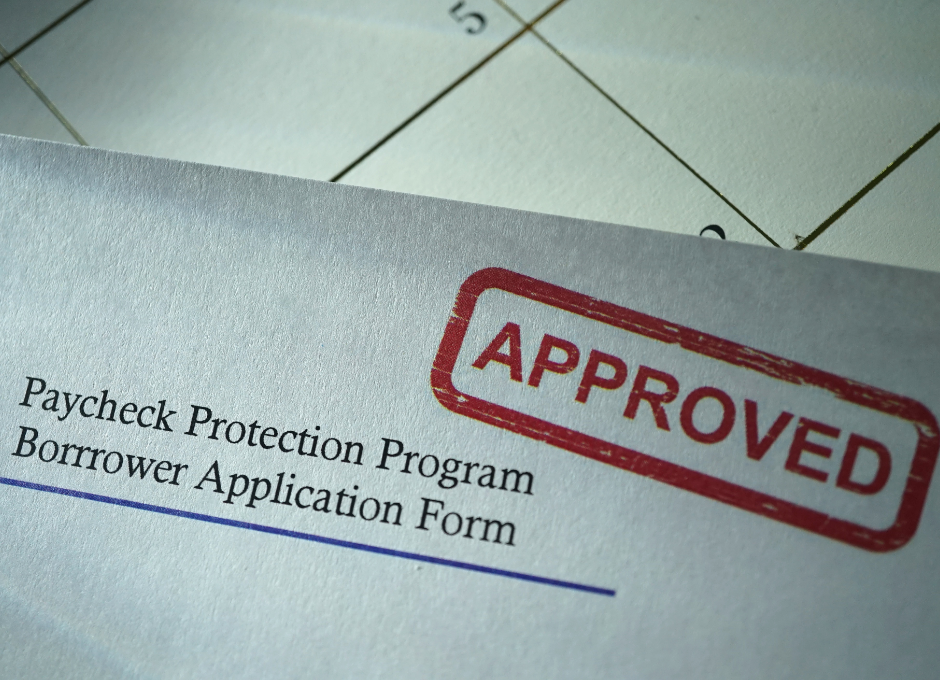According to the US Department of Labour's WHD investigations for the fiscal year 2021, an average of $1,211.70 in back pay for each employee. That's more than three times what a retail cashier would make on a regular workday.
Keeping track of any back pay owing to or requested by workers is a vital element of a well-organized payroll. Understanding back pay and how it works helps ensure that your company's finances are in order and that your employees are paid accordingly for their efforts.
In this article, we will learn everything about back pay, how back pay works, what the components of back pay are, and much more.
Here are the points covered in this article:
- What Is Back Pay?
- How Does Back Pay Work?
- Components of back pay
- Reasons for Back Pay
- Collecting Back Pay
- Back Pay vs. Retroactive Pay
- Best practices when dealing with back pay as an HR representative
Let’s begin!
What Is Back Pay?
Back pay refers to the amount of salary and other benefits that an employee alleges they are entitled to, following a wrongful termination or other inappropriate change in wage status. Back pay is generally computed from the termination date to the settlement date for the claim or the judgement date.
Now, let’s see how back pay works.
How Does Backpay Work?
You are entitled to back pay if your employer withholds a part of your compensation without your authorization.
If an employee resigns from a firm, they are still entitled to payment for hours they have worked. Employees should receive their final pay no later than the regular pay date for the last working payday. If not, their employer owes them back compensation for those salaries.
The misclassification of employees as exempt from overtime restrictions is a typical cause of back pay. However, if a salaried employee makes less than $684 per week, they are non-exempt and entitled to one-and-a-half of their usual pay rate for any hours worked over 40. The difference between their regular rate of pay and the overtime pay they should have earned is the amount of back pay they are entitled to.
In some circumstances, you may feel entitled to the money you have not yet received. However, your employer disagrees or refuses to pay. As a result, you may have to make an effort to collect back wages on your own, which may include legal action.
The Fair Labor Standards Act (FLSA) provides for the recovery of back pay. It also includes unpaid minimum and overtime earnings. You should also check with your state's labour agency for information on local legislation. When state law differs from federal law, an employer must follow the most protective norm of employees.
Let's move on to the next section, where we will look into the components of back pay.
Components of back pay
The HR department processes and determines the back pay components in your organization.
If an employee is entitled to back pay for a salary raise, be sure to complete the necessary papers to verify that they are drawing their payment from the right budget. Also, check whether there are any benefits or overtime wages that need to be paid out. Additionally, make sure you're administering payment for the right period.
Now, we know what back pay is, how it works, and its components. So let's understand why a worker might be entitled to back pay.
Reasons for Back Pay
There are several reasons why a worker may be entitled to back pay.
Unable to Finish the Job
If an employee was wrongfully stopped from finishing work, they might also be entitled to back compensation. For example, if an employer illegally terminates an employee, they may be entitled to back pay for the period they were unable to work.
Switch from hourly to salaried employment
Your company may occasionally surprise you with unanticipated back pay. For example, if you switch from hourly to salaried employment or vice versa, you may receive some additional salary from your employer based on your previous type of employment.
Compensation for a Pay Increase Received Retroactively
Union members may be entitled to back pay if there are delays in retroactive pay rise provisions during the negotiations of a new contract beyond the end date of a former contract.
An Employer Isn't Paying the Minimum Wage
Another significant source of back pay is businesses' inability to pay a minimum wage to the expanding number of workers covered by state minimum wage legislation.
Employees of government contracting agencies who were underpaid under the Davis-Bacon and Related Acts and the McNamara-O'Hara Service Contract Act may also be due back pay.
Wrongful Dismissal
Back pay may also be an option following wrongful termination. It depends on the number of wages and benefits an employee claims to be entitled to after being wrongfully terminated. Back pay is calculated from the date of termination to the date of claim settlement or judgement.
Now, let’s see how you can collect back pay.
Collecting Back Pay
The FLSA establishes many procedures for recouping overpaid minimum and overtime pay.
- The Wage and Hour Division of the Secretary of Labor is in charge of overseeing the payment of back pay.
- The Secretary of Labor may file a lawsuit for unpaid wages and damages.
- By securing an injunction, the Secretary of Labor can prevent an employer from breaching the FLSA, including through unlawful pay withholding.
- In addition, an employee has the right to sue for back pay and damages, as well as lawyers' fees and court costs.
If you received back pay while under the supervision of the Wage and Hour Division, or if the Secretary of Labor has already filed a suit to collect the wages, you cannot initiate an FLSA claim.
Back pay claims have a two-year statute of limitations. However, it can be extended to three years in the event of willful breaches. You will be unable to file a lawsuit if you do not address the issue within the limitation period.
Now, you know how to collect back pay. Let's move on to the next section, where we will see the difference between back pay and retroactive pay. They might seem very similar, but some key differences are there.
Back Pay vs. Retroactive Pay
Retroactive pay is comparable to back pay in that it is money owed to an employee by an employer for work previously completed. Back pay, on the other hand, is for unpaid labour.
Retroactive compensation is for underpayment—that is, the gap between what was paid and what should have been paid.
Let's look at an example.
If an employee was paid for all hours worked but was paid less, the difference would be retroactive compensation. However, if they did not get paid for some hours or did not earn overtime, the difference would be back pay.
There is something worth noting here. Some people don't distinguish between back pay and retroactive compensation. Therefore, this isn't a clearly defined or regulated phrase.
We hope the difference is clear. The following section is for HR representatives to deal with back pay properly.
Best practices when dealing with back pay as an HR representative
Handling any duty regarding an employee's payment should be done with caution. There are various best practices in HR for managing back pay and processing employee payment claims. Ethical business practices that encourage organization and efficiency are the basis of these policies.
Here are some best practices to follow as an HR professional when dealing with back pay:
Maintain accurate data
Keep accurate data on employee pay rates and past paycheck information to ensure that each employee is paid the correct amount. In addition, keeping detailed records on how and when staff are paid will assist your company in maintaining a balanced budget.
Take action right away
As soon as you realize that back pay is necessary, it would help if you took the appropriate procedures to amend the employee's next payment. This guarantees that employees receive their paychecks on schedule.
Calculate with caution
Check your calculations to ensure that the employee receives the right back pay. Calculation errors may result in extra back pay demands.
Maintain frequent communication
Keep managers, employees, and accountants informed of the payroll update. Additionally, schedule the payment for sending as soon as you complete the back pay procedure. Communicating with others helps manage expectations. You should also inform every team member that the problem is being addressed.
Make use of other departments
Calculating back pay is sometimes a complex procedure with financial and legal ramifications. Collaborating with other HR specialists, accounting department members, and your legal team can assist you in managing back pay effectively and as per business policy.
And that’s all, you need to know about back pay. Now let’s look at some of the most frequently asked questions about back pay.
Frequently asked questions
How Does an Employer Reimburse an Employee?
Most companies get employment practise liability insurance to protect themselves against unpaid wages. If an employee successfully files a back pay claim, the insurance will pay the amount owed.
Is back pay taxable?
Yes, because an employee receives back pay for work performed, it is subject to taxes as their average salary. It is considered income by the Internal Revenue Service (IRS).
In which tax year should I declare my wages?
Back pay is recorded in the year in which it is received, regardless of the year in which the employee worked. So, for example, if your employee earned wages in 2019 but got back pay for that labour in 2020, the payment would be reported on the employee's 2020 W-2 form.
How Do I Recover My Unemployment Pay?
Although each state has its own unemployment rules, unemployment benefits may be retroactive to the date of eligibility. So if you haven't gotten your full employment payments, the first thing you should do is contact your state's Department of Labor.
Key Takeaways
We've finally arrived at the end of this article. Let's look at some crucial information we covered in this article:
Back pay is the sum owed to an employee but not yet paid. Whether the employer withheld pay intentionally or unintentionally, the employee is still liable for it and must receive compensation.
An employer who owes back pay must refund the entire sum of the employee's wages and benefits from the beginning of the underpayment until submitting the claim. Employees may also be entitled to monetary damages or legal expenses.
Components of backpay
Your organization's back pay components will be determined by how the human resources department processes payroll. If an employee is entitled to back pay for a salary raise, be sure you complete the necessary papers to verify that their payment is drawn from the proper budget.
Reasons for Back Pay
- Unable to Finish the Job
- Switch from hourly to salaried employment.
- Compensation for a Pay Increase Received Retroactively
- An Employer Isn't Paying the Minimum Wage
- Wrongful Dismissal
Collecting Back Pay
- The Wage and Hour Division of the Secretary of Labor may oversee the payment of back wages.
- The Secretary of Labor may file a lawsuit for unpaid wages and damages.
- By securing an injunction, the Secretary of Labor can prevent an employer from breaching the FLSA, including through unlawful pay withholding.
- An employee has the right to sue for back pay and damages, as well as lawyers' fees and court costs.
Back Pay vs Retroactive Pay
Retroactive pay is money owed to an employee by an employer for work previously completed. Back pay, on the other hand, is for unpaid labour
Retroactive compensation is for underpayment. Underpayment is the gap between what was paid and what should have been paid.
Best practices when dealing with back pay as an HR representative
- Maintain accurate data
- Take action right away
- Calculate with caution
- Maintain frequent communication
- Make use of other departments
Related Articles












